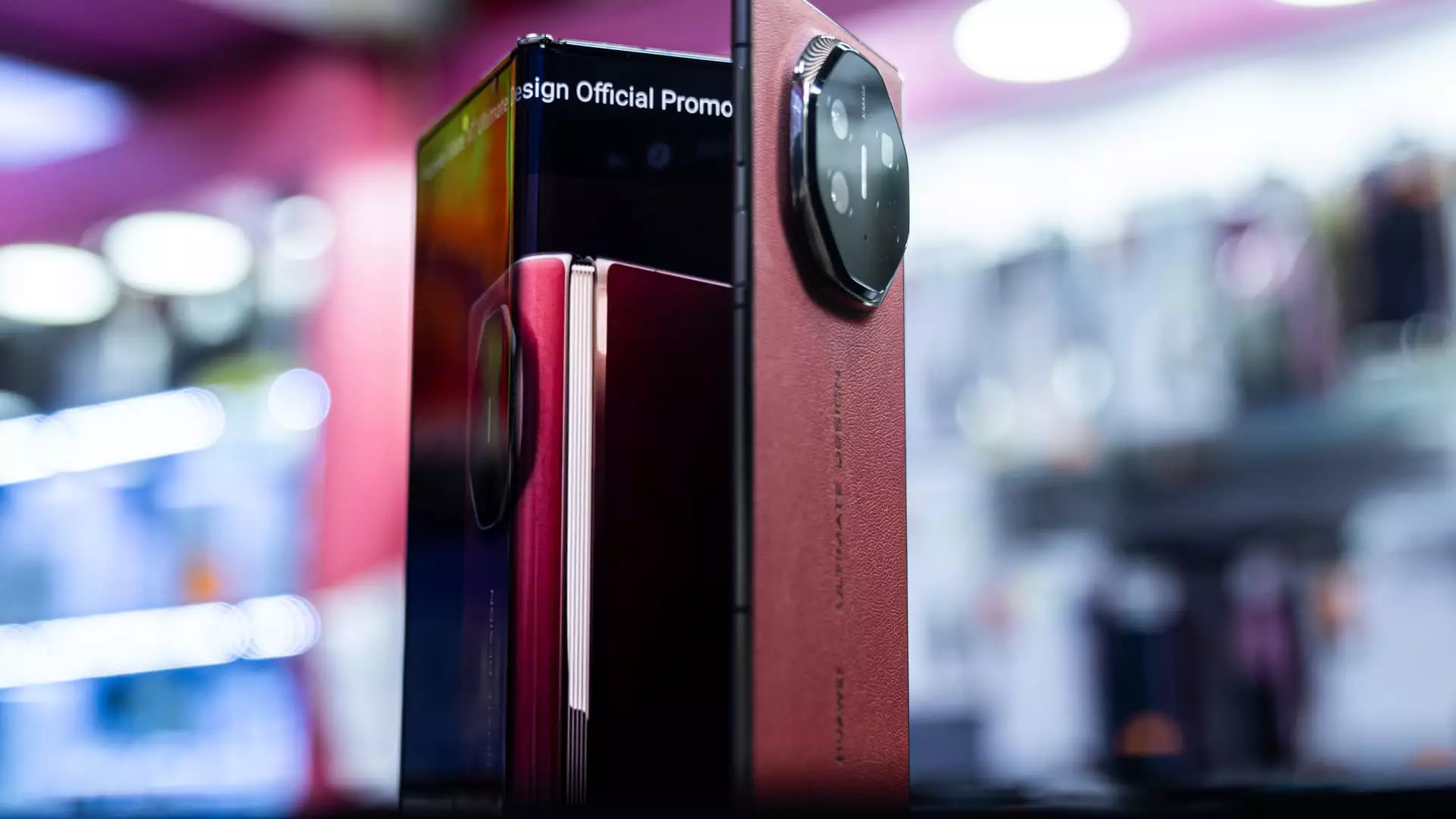After a tumultuous few years marked by U.S. sanctions that severely affected its global standing, Huawei is making a strategic attempt to reclaim its position in the international smartphone market with the launch of the Mate XT—a remarkable trifold smartphone. Introduced outside of China on Tuesday, the Mate XT features a hefty starting price of €3,499 (approximately $3,660), signaling Huawei’s intent to cater to an upscale demographic, even amid ongoing geopolitical challenges that have limited its market access.
The location of its new model’s availability is still under wraps; however, initial reports indicate that the smartphone has made its debut in regions such as Saudi Arabia and the United Arab Emirates. This approach aligns with Huawei’s strategy to first target markets where it historically had a presence before trying to expand beyond those confines.
The Huawei Mate XT stands out primarily due to its extraordinary design, which allows for multiple folding configurations—a feat that places it in a unique category compared to conventional foldable devices that only bend once. With its ability to operate as a single, double, or triple screen, the technology promises versatility that few devices on the market can boast. While this innovative design may capture the imagination of tech enthusiasts and early adopters, analysts are skeptical about its broader market implications.
Francisco Jeronimo, IDC’s vice president for data and analytics, indicates that the brand’s ambition to create a luxury tech item could serve as a double-edged sword. This unprecedented price tag suggests that Huawei is deliberately targeting an affluent segment, particularly those looking to flaunt their wealth rather than focus purely on functionality. With this elite positioning, the device runs the risk of being viewed as a status symbol rather than a utility.
Huawei, once a formidable competitor against juggernauts like Apple and Samsung, has faced a downward spiral since the onset of U.S. sanctions in 2019. The constriction of its access to advanced chip technology and Google’s Android operating system has severely diminished its market share outside China, plummeting to a mere 0.3%. However, the company has demonstrated resilience within its home country, experiencing a surge in market share—growing from 12% to 17%—following the release of a smartphone embedded with a sophisticated chip.
This domestic resurgence begs the question: can Huawei replicate this success internationally? The answer, as analysts caution, may not be straightforward; the lack of access to Google services remains a profound disadvantage. Huawei has responded by promoting its app store, yet for many potential users in the mainstream market—the same audience that usually demands high-end functionalities—Huawei’s offerings may present a “gaping hole” in their ecosystem.
The Road Ahead: Testing Market Waters
The future of Huawei’s Mate XT outside of China is somewhat precarious. This launch acts as a litmus test, not just for the phone itself, but for Huawei’s adaptability in a market that has shifted significantly since its peak. While projections indicate that selling half a million units could yield $1.5 billion in revenue, scalability remains a contentious issue based on the device’s design, pricing strategy, and ongoing restrictions regarding Google services.
As Huawei attempts to pivot toward high-end devices, the Mate XT could either symbolize a new beginning in the luxury smartphone sector or further entrench the company’s fortunes in uncertainty. Ultimately, for the tech giant to secure its foothold internationally, a delicate balance must be achieved between innovative offerings and user accessibility, along with navigating the minefield of sanctions that loom ominously in the background.
While the Mate XT embodies Huawei’s innovative spirit, the real challenge lies in understanding whether this extravagant gadget can appeal beyond a niche audience, especially when pivotal features such as seamless access to popular apps remain inaccessible.

